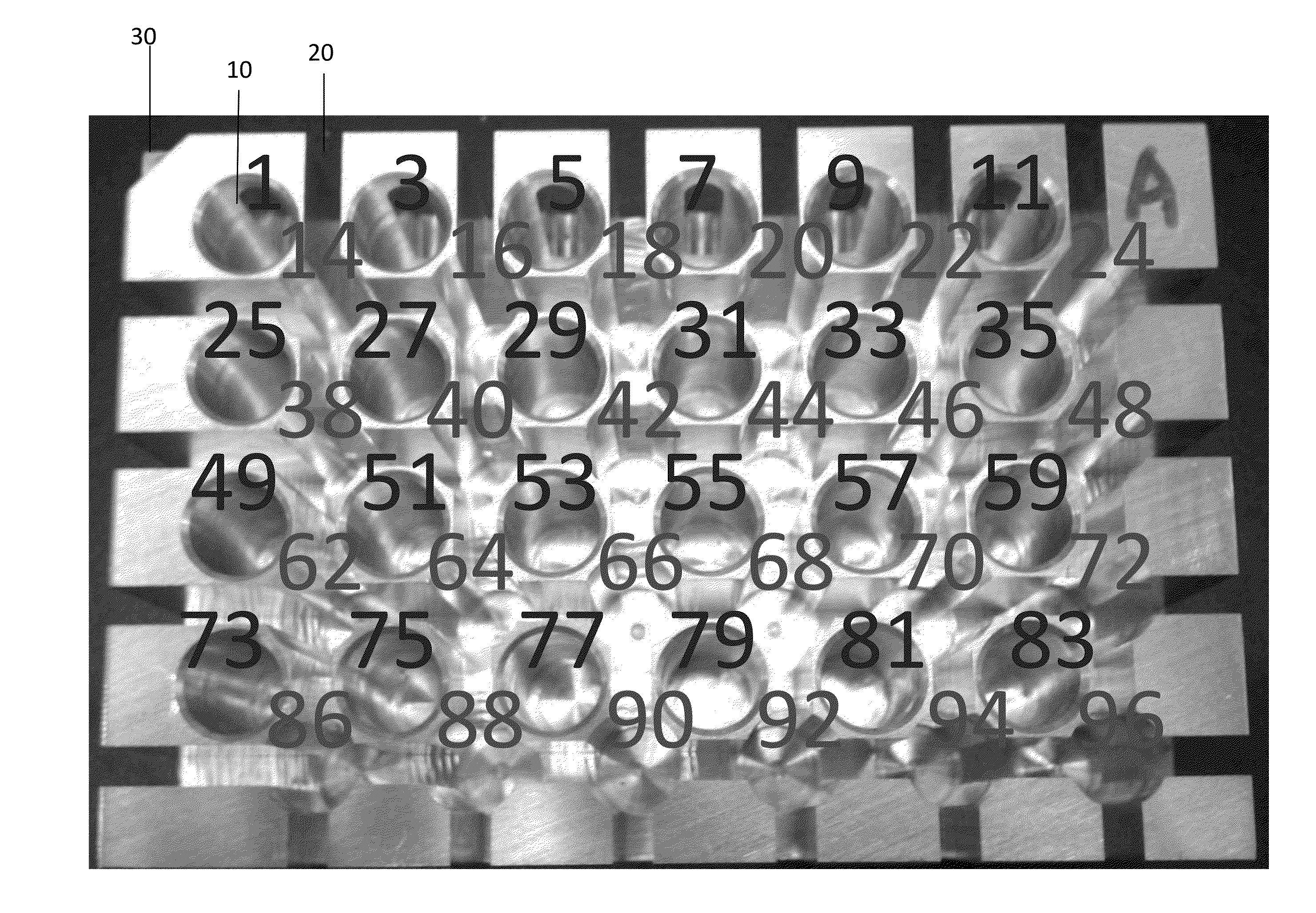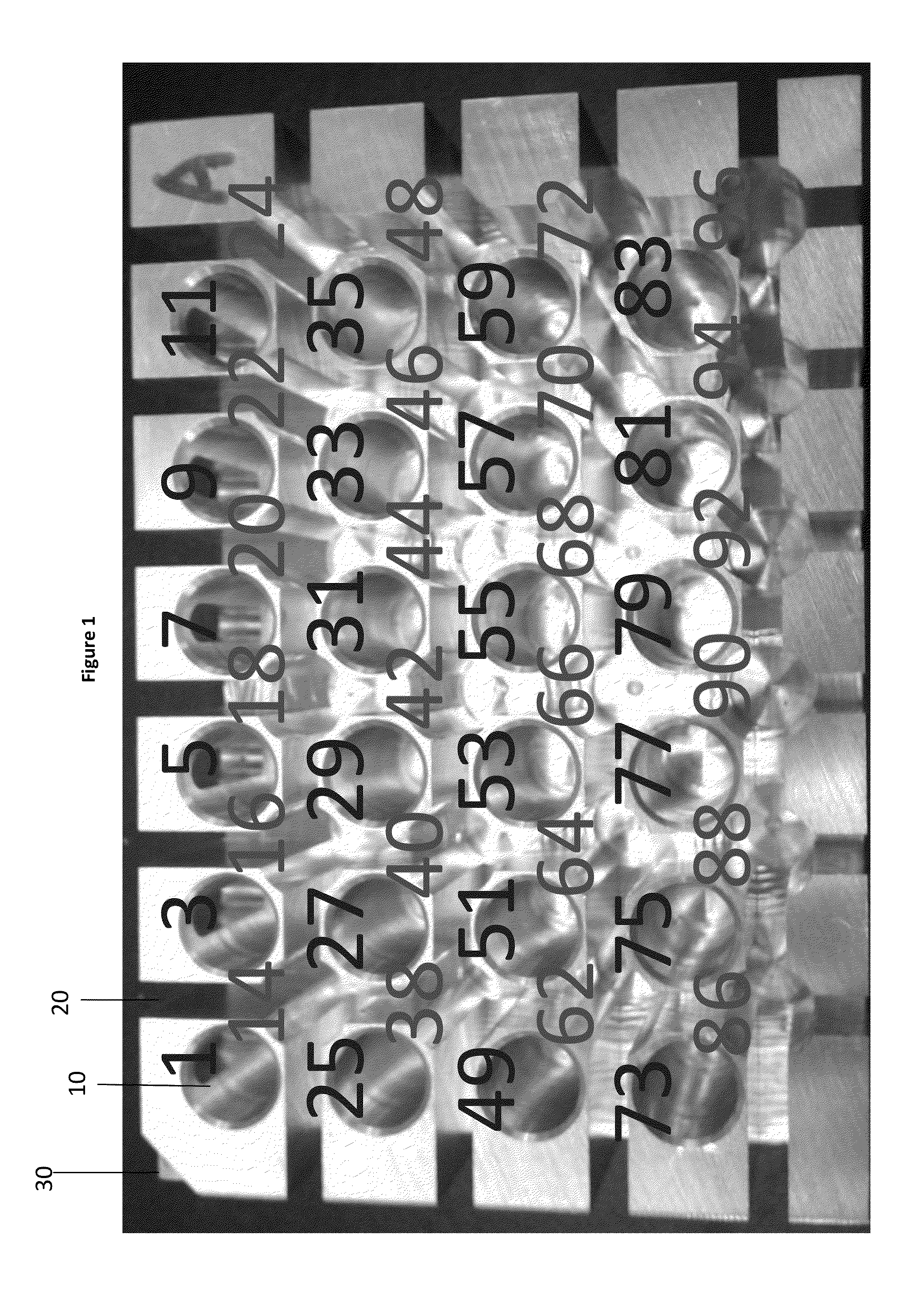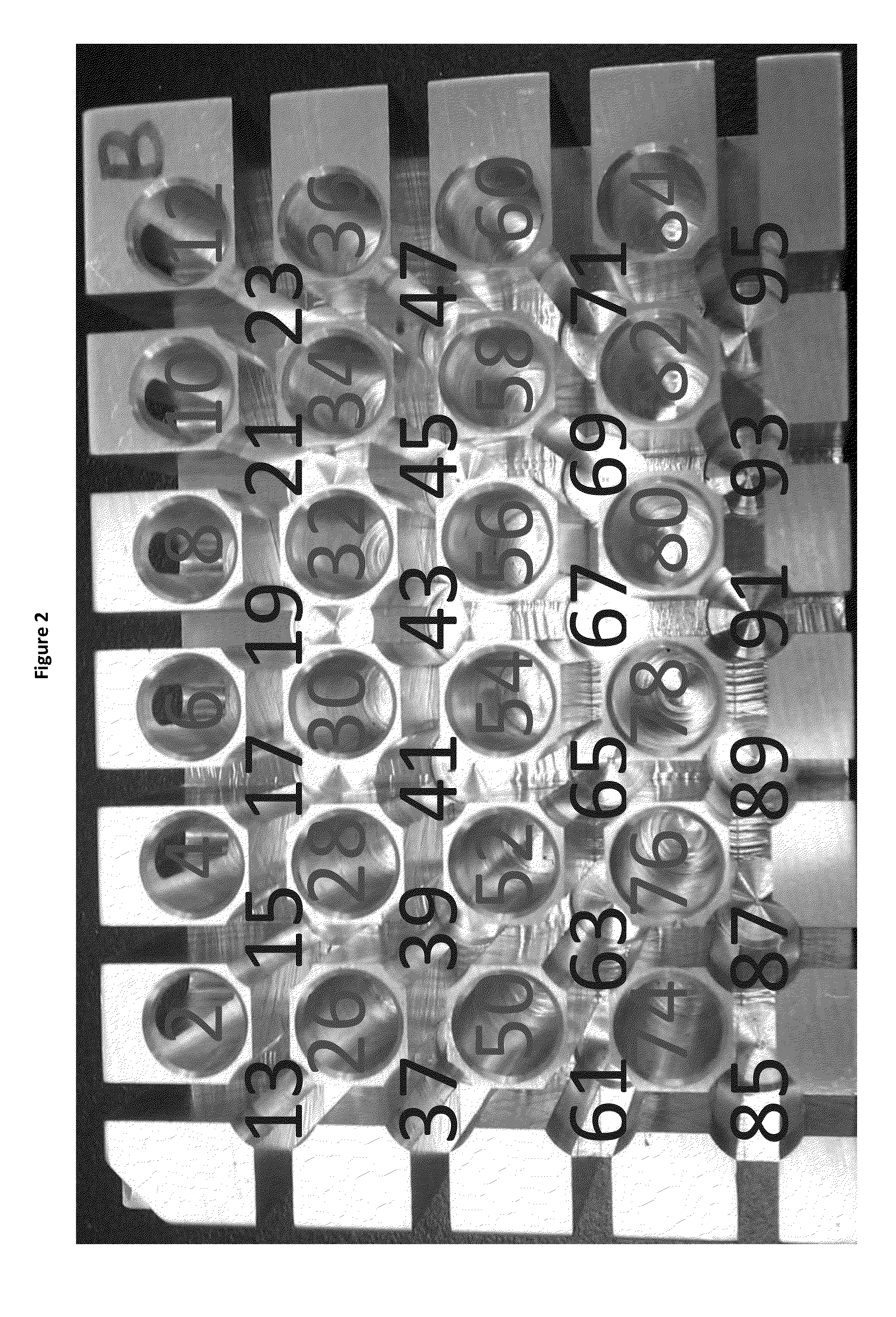System and method for high throughput tissue sample extraction
- Summary
- Abstract
- Description
- Claims
- Application Information
AI Technical Summary
Benefits of technology
Problems solved by technology
Method used
Image
Examples
example 1
Configuration and Construction of a Matched Pair of Carriers
[0020]A matched pair of carriers was manufactured by Connelly Machine® in Santa Ana, Calif. following instructions provided by the inventor. Two equal weight aluminum blocks were used as starting material. The outer dimensions of length, width, and height for the finished carriers were both 5.040″×3.378″×1.733″, as shown in FIGS. 3 and 4. Each tube holder was generated by drilling a hole of 0.440″ in diameter and 1.406″ in depth. The location of every tube holder of each carrier is shown in FIGS. 3 and 4. A 0.1″ diagonal cutout (see FIG. 1, reference numeral 30) at the upper left corner was made to aid in identifying the orientation of each carrier. Viewing windows were added by drilling oval-shaped holes, as shown in FIG. 5.
example 2
Use of a Matched Pair of Carriers for High-Throughput Extraction of Rabbit Iris-Ciliary Body
[0021]Carriers A and B were pre-chilled at 4° C. 280 rabbit iris-ciliary body (ICB) samples were each extracted with 1 mL of methanol / water (1 / 1) in 2 mL tubes using an Omni Bead Ruptor 24® at 4° C. under 6.8 meter / sec for 44 seconds. Twenty-four ICB sample tubes were placed in an Omni Bead Ruptor 24 plate and homogenized at the same time. After the first 24 ICB samples were homogenized and removed from the homogenizer, the next set of 24 ICB sample tubes was loaded and homogenized. While the second set of samples was homogenizing, the first set of 24 ICB sample tubes was placed into carriers A and B according to the numbering as set forth in FIGS. 1 to 4. Two more sets of ICB samples were homogenized and transferred to carriers A and B, bringing the total number to 96. Carriers A and B were centrifuged at 4000 rpm for 5 minutes. There was no need for balancing the carriers since both carrier...
example 3
Use of a Matched Pair of Carriers for High-Throughput Extraction of Skin Samples
[0023]Carriers A and B as shown in FIGS. 1-4 were pre-chilled at 4° C. before loading homogenized samples. Twenty-four dermatomed ex vivo human cadaver trunk skin samples were each homogenized with 1 mL of methanol in 2 mL tubes using an Omni Bead Ruptor 24 at 4° C. under 6.8 meter / sec for 44 seconds. The 24 sample tubes were placed in an Omni Bead Ruptor 24 plate and homogenized at one time. After sample homogenization, the 24 tubes were removed them from the homogenizer and then placed into carriers A and B (12 tubes in each carrier) according to the numbering of FIGS. 1 and 2. Carriers A and B then were centrifuged opposite each other at 4000 rpm for 5 minutes without balancing. Carriers A and B then were placed into Tomtec Quadra 4 Handling Workstations, and 50 μL of supernatant were transferred from each tube of carriers A and B to a clean 96-well plate. The viewing windows and / or crenellated gaps o...
PUM
 Login to View More
Login to View More Abstract
Description
Claims
Application Information
 Login to View More
Login to View More - R&D
- Intellectual Property
- Life Sciences
- Materials
- Tech Scout
- Unparalleled Data Quality
- Higher Quality Content
- 60% Fewer Hallucinations
Browse by: Latest US Patents, China's latest patents, Technical Efficacy Thesaurus, Application Domain, Technology Topic, Popular Technical Reports.
© 2025 PatSnap. All rights reserved.Legal|Privacy policy|Modern Slavery Act Transparency Statement|Sitemap|About US| Contact US: help@patsnap.com



